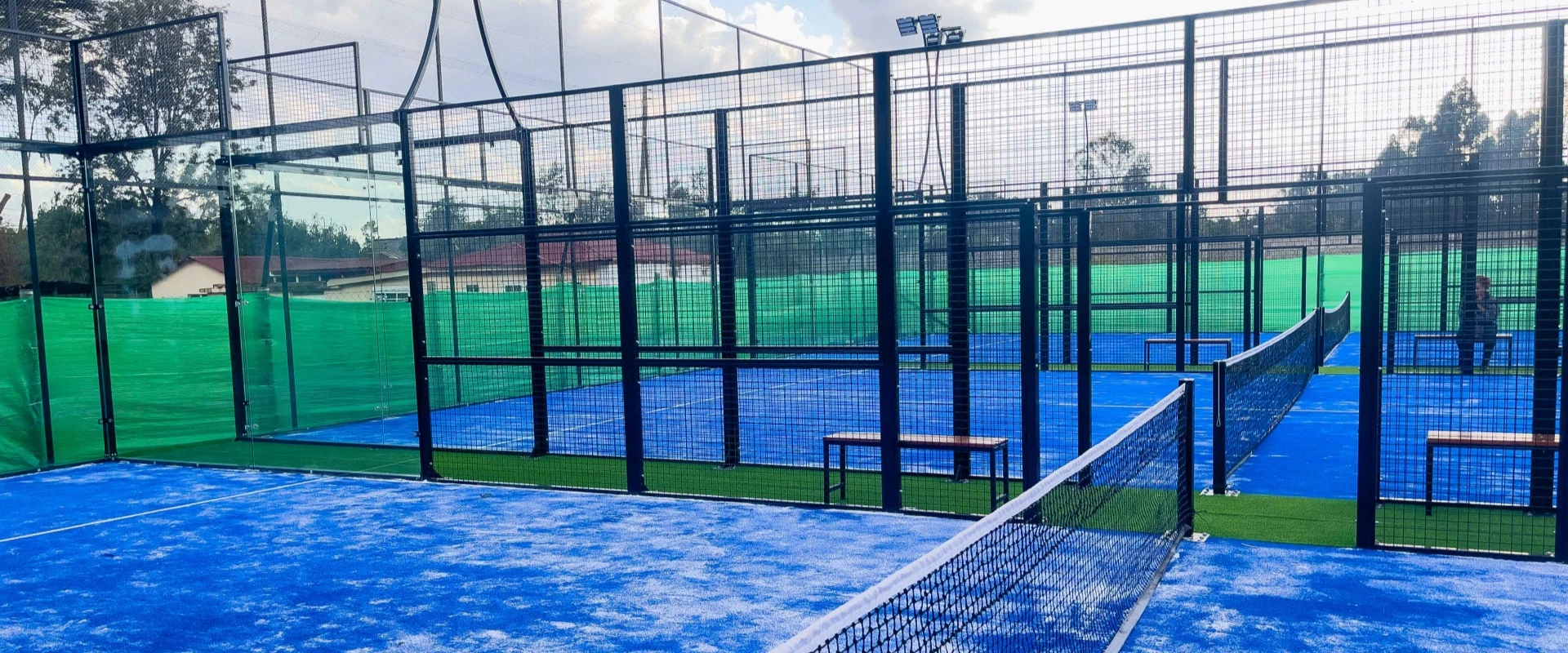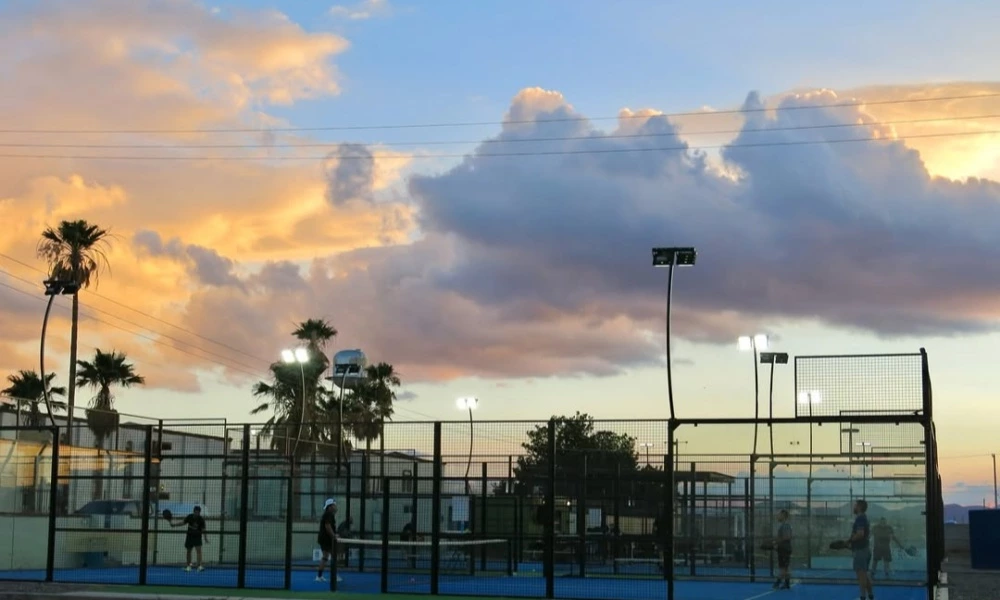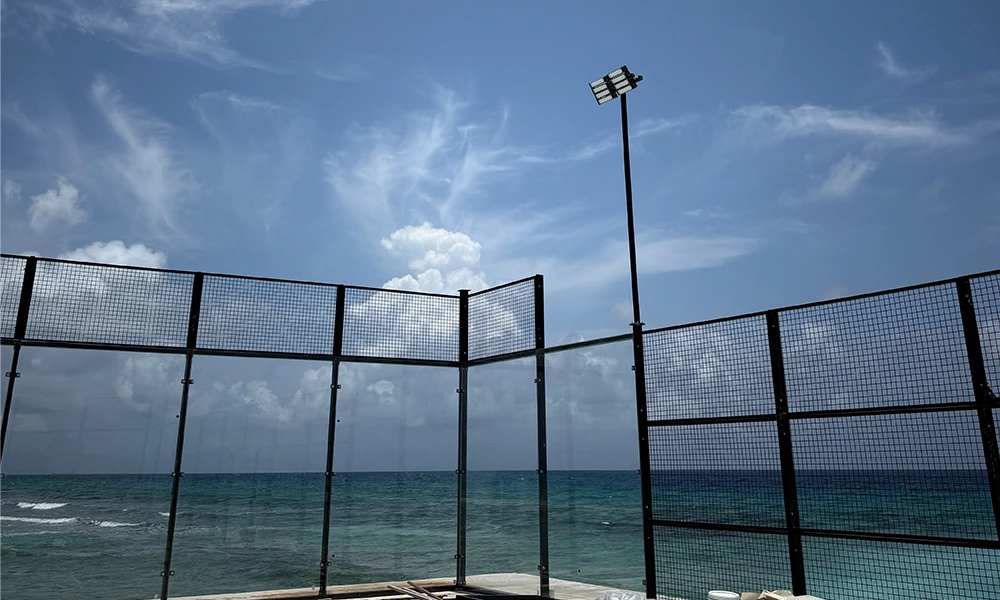Padel vs Pickleball : quel sport remplace le Pickleball ?
À mesure que le sport continue d'évoluer, certains sports autrefois populaires ont progressivement disparu de la vue du public, tandis que d'autres sports émergents ont connu une croissance rapide. Le pickleball, en tant que sport populaire depuis des décennies, a progressivement perdu son statut unique, et c'est le padel qui a connu cette montée en puissance. Avec son gameplay unique et sa popularité croissante, ce sport devient un nouveau choix de remise en forme et de divertissement pour les gens.
Qu'est-ce que le padel ?
Le padel est un sport qui combine des éléments de tennis et de squash et se joue généralement sur un terrain clos. Le terrain mesure environ 20 mètres de long et 10 mètres de large. Le jeu se joue généralement par deux équipes de deux joueurs, utilisant des raquettes spéciales sans cordage et des balles légères.
Les règles sont similaires à celles du tennis, mais la balle peut être frappée après avoir rebondi sur le mur, ce qui rend le jeu plus rapide et plus intéressant. En raison de sa facilité d'utilisation et de ses faibles exigences physiques, le padel est rapidement devenu populaire dans le monde entier, attirant des participants de tous âges. De nombreux pays ont construit des terrains dédiés dans les villes et les villages, ce qui a favorisé la popularité de ce sport.
Le padel n'est pas seulement un bon moyen de faire de l'exercice, mais favorise également l'interaction sociale. De nombreuses personnes se font de nouveaux amis grâce à ce sport. Avec l'augmentation des événements et des ligues, le padel se développe progressivement pour devenir un sport international.
Qu'est-ce que le Pickleball ?
Le Pickleball est un sport qui combine des éléments du tennis, du tennis de table et du badminton, généralement pratiqué sur un petit terrain. Il utilise une balle en plastique et une raquette spéciale semblable à une raquette de tennis, et les joueurs s'affrontent en frappant la balle des deux côtés d'un filet bas.
Le Pickleball est né à Baldwin Island, Washington, États-Unis, en 1965 par trois amis, Joel Pritchard, Bill Bozman et Alan Malmer. À cette époque, ils voulaient créer une nouvelle activité de divertissement familial pour les enfants, ils ont donc combiné les caractéristiques de plusieurs sports et ont progressivement formé le pickleball d'aujourd'hui. Initialement promu uniquement dans les familles et les communautés, mais au fil du temps, le sport a rapidement gagné de plus en plus d'adeptes et est maintenant populaire dans le monde entier, en particulier parmi les personnes âgées et les athlètes amateurs.
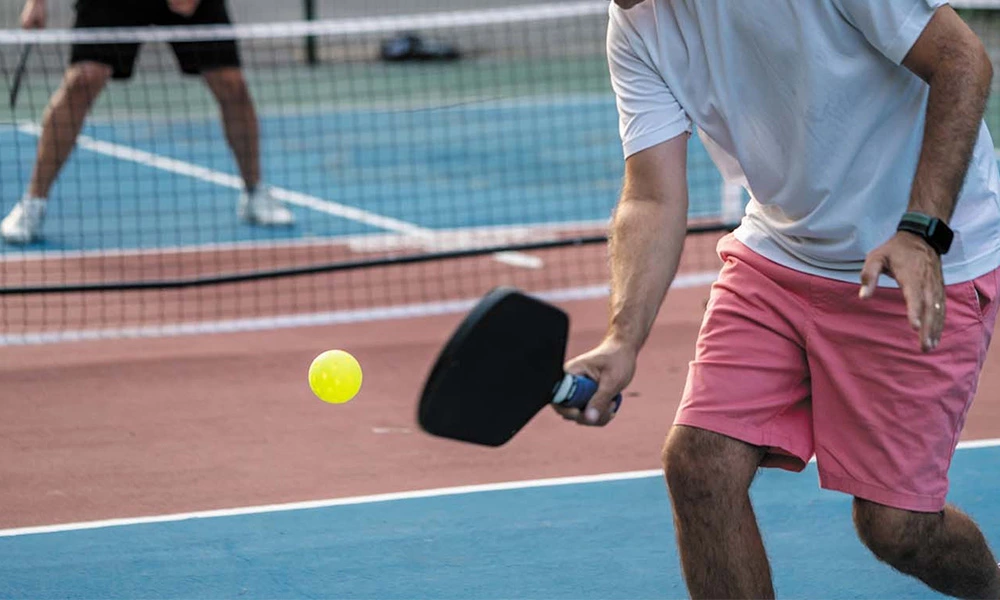
Différence entre la taille d'un terrain de pickleball et d'un terrain de padel
Les terrains de pickleball sont plus petits et adaptés aux simples ou aux doubles, mesurant 13,41 mètres de long et 6,1 mètres de large.
Le terrain est divisé en deux côtés, gauche et droit, séparés par un filet de 86 cm de haut au milieu. La disposition d'un terrain de pickleball est similaire à celle d'un terrain de tennis, avec un côté gauche et un côté droit symétriques, une zone de service et une zone sans frappe dans la zone arrière, et un espace tampon suffisant autour du terrain pour assurer la sécurité et la fluidité des mouvements. Comme le pickleball utilise des balles plus légères et de petites raquettes, la conception du terrain est compacte et nécessite moins d'espace.
En revanche, les terrains de padel sont plus grands, avec une taille standard de 20 mètres de long et 10 mètres de large, et sont généralement adaptés aux jeux en double.
Le terrain est entouré de murs en verre et de filets métalliques, permettant à la balle de rebondir sur le mur, ajoutant des aspects tactiques et intéressants au jeu. La hauteur du filet d'un court de padel est légèrement supérieure à celle d'un court de pickleball, généralement de 88 à 92 cm. Étant donné que l'espace global d'un court de padel est plus grand et que le jeu repose sur les caractéristiques de rebond du mur, la conception du terrain est plus ouverte et nécessite plus d'espace au sol.
Différences entre les raquettes et les balles de padel et de pickleball
Le padel et le pickleball sont deux sports de balle différents, chacun avec un équipement et un gameplay uniques. Les raquettes de padel sont généralement fabriquées à partir de matériaux composites tels que la fibre de carbone ou la fibre de verre, avec une conception plus épaisse, un centre en mousse dure et des surfaces perforées pour offrir une plus grande puissance de frappe. En revanche, les raquettes de pickleball sont souvent fabriquées en bois ou en matériaux composites et ont une structure plus légère.
En termes de conception de balle, les balles de padel sont plus petites et plus pelucheuses que les balles de pickleball, et ressemblent aux balles de tennis, mais avec une pression réduite, moins d'air à l'intérieur et plus élastiques lors de la frappe. Les pickleballs sont similaires aux wiffle balls, légèrement plus lourdes et perforées, et sont généralement fabriquées en plastique composite et sont disponibles en versions indoor et outdoor.
Les principales différences entre les deux sont l'épaisseur et le matériau des raquettes, ainsi que la taille et la conception des balles. Le padel se concentre davantage sur la résistance et la durabilité, adaptées aux coups rapides et puissants, tandis que le pickleball met l'accent sur la légèreté et la flexibilité, adaptées à une variété de lieux.
Différences de jeu et de règles entre le pickleball et le padel
Par rapport au pickleball, le padel présente des avantages évidents en termes de gameplay et d'attrait. Le padel a des règles simples et les joueurs débutants comme expérimentés peuvent rapidement s'y mettre. Par rapport au pickleball, le padel a un terrain plus petit et est entouré de murs, ce qui permet aux joueurs de contrôler plus facilement la direction et la vitesse de la balle. Les joueurs peuvent non seulement augmenter la diversité du jeu en frappant les murs devant et derrière, mais aussi augmenter le drame et le divertissement du jeu grâce à cette règle unique. En revanche, bien que le pickleball soit également un sport simple et facile à apprendre, son terrain ouvert et ses règles relativement simples ne peuvent pas offrir une expérience de jeu aussi variée que le padel.
Différences de notation entre le padel et le pickleball
Le padel se joue généralement sur un terrain clos avec des murs en verre autour pour que la balle puisse rebondir. Le sport utilise un système de notation similaire au tennis, où les deux équipes marquent des points en frappant la balle, et le jeu se joue en sets et sets, avec une avance de deux points nécessaire pour gagner. Le padel peut se jouer en simple ou en double, l'accent étant mis sur la coordination et la tactique.
Le terrain de pickleball est plus petit, fait généralement partie d'un court de tennis et utilise une surface plane. Les joueurs utilisent des raquettes en bois ou en composite pour frapper une balle en plastique plus légère. Le pickleball est principalement marqué par les joueurs sur les lignes de touche, et seule l'équipe au service peut marquer. Le jeu se joue généralement au meilleur des trois manches, avec chaque set jusqu'à 11 points, et nécessite également une avance d'au moins deux points. Le pickleball met davantage l'accent sur les réactions rapides et la stratégie, et convient aux participants de tous âges.
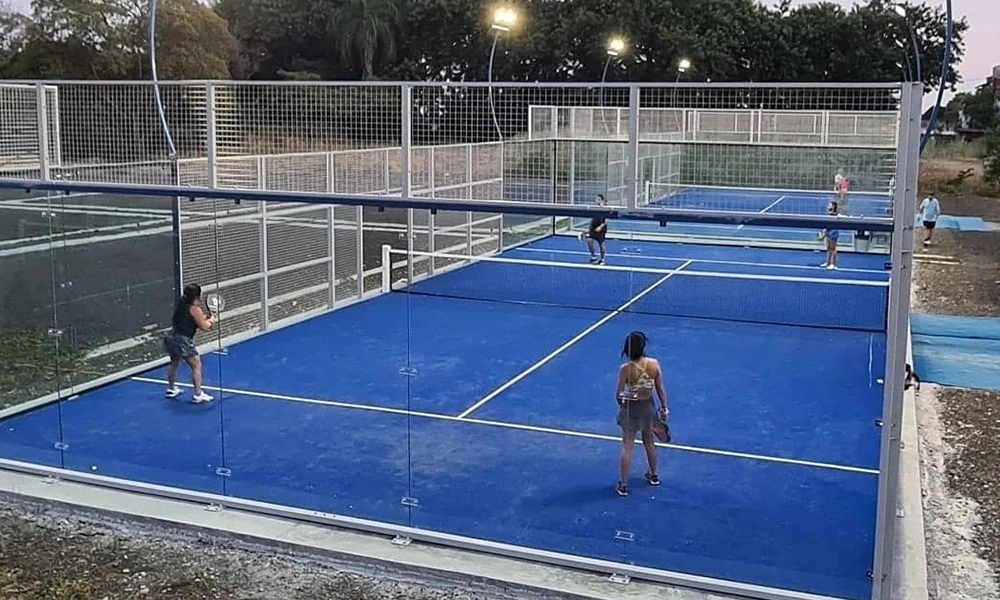
Pourquoi le padel peut-il remplacer le pickleball ?
Le padel accorde plus d'attention à la conscience d'équipe
Le padel accorde plus d'attention au travail d'équipe et le jeu se joue généralement sous forme de doubles, ce qui non seulement augmente le plaisir du jeu, mais renforce également l'importance du travail d'équipe. Les joueurs doivent coopérer tacitement et développer des stratégies tactiques dans le jeu. Par rapport aux simples, ce mode double est plus interactif et stimulant. Bien que le pickleball dispose également d'un mode double, le travail d'équipe et la stratégie du padel sont sans aucun doute meilleurs.
Convivialité pour le corps et commodité du lieu
La raison pour laquelle le padel peut progressivement remplacer le pickleball est également due à sa convivialité pour le corps et à la commodité du lieu. Par rapport au pickleball ou au tennis traditionnel, le padel a moins de charge sur le corps. En raison de la petite taille du lieu, les joueurs n'ont pas besoin de courir longtemps comme au tennis pendant le jeu, ce qui réduit considérablement la charge sur les genoux et les articulations. Ceci est particulièrement important pour les personnes âgées ou souffrant de blessures sportives. Le caractère convivial du Padel attire un plus large éventail de personnes. Bien que le Pickleball soit également un sport peu exigeant physiquement, par rapport au Padel, ce dernier peut néanmoins prendre bien soin de la santé physique des joueurs tout en offrant une compétition féroce.
Les terrains de padel sont plus adaptés aux résidents urbains
D'autre part, l'agencement et la commodité des terrains de padel les rendent plus adaptés aux résidents urbains. Les terrains de padel occupent une surface plus petite et sont plus faciles à trouver dans les zones densément peuplées comme les centres-villes, contrairement au Pickleball, qui nécessite généralement un espace de terrain plus grand. Les jeunes et les groupes de cols blancs des villes aiment de plus en plus entrer rapidement dans l'état sportif pendant de courtes pauses, et le padel répond parfaitement à ce besoin. Son agencement compact et son style de jeu rapide rendent le padel plus populaire dans les villes modernes.
À quel point le padel est-il difficile à jouer ?
Le padel nécessite une bonne coordination œil-main, un excellent jeu de jambes et de mouvements, ainsi qu'un bon contrôle de la raquette. Mais le temps d'apprentissage est très rapide.
La plupart des gens pensent qu'il semble facile d'apprendre à jouer au pickleball. Les règles sont simples, mais les courts plus petits et les vitesses de balle plus lentes rendent difficile pour les nouveaux joueurs de contrôler la puissance et la vitesse de la balle. Contrairement au pickleball, le padel-tennis a une faible barrière d'entrée et est décrit comme un hybride de plusieurs sports de raquette, de sorte que les personnes de tous âges et de différentes capacités athlétiques peuvent y participer.
Quelle est la condition physique nécessaire pour jouer au padel ?
Le padel-tennis est similaire à de nombreux autres sports de raquette. Il ne nécessite pas de forme physique, mais si vous êtes en forme, cela vous aidera dans votre jeu. Une bonne endurance cardiovasculaire, de l'agilité et de la force vous aideront à maintenir votre niveau de performance.
Quelle est la popularité actuelle du sport du padel ?
Le padel-tennis a connu une croissance rapide, avec une clientèle fidèle dans les zones urbaines telles que New York, et émerge également dans les parcs et les centres communautaires.
Il y a plus de joueurs de padel aujourd'hui qu'il y a un an, et certainement plus qu'il y a dix ans. Il existe de nombreux endroits où jouer pour les joueurs de tout niveau. De plus, il existe de nombreux circuits professionnels, ce qui signifie que plus de gens regardent ce sport aujourd'hui que jamais auparavant.
Le padel offre les avantages sociaux du contact étroit, du travail d'équipe et de la camaraderie entre les joueurs. Ils varient en termes de facilité d'apprentissage, mais tous gagnent en popularité et sont addictifs. Le padel gagne en popularité dans le monde entier, en particulier en Europe et en Amérique du Sud, où le jeu est vivant et social. Le pickleball est un sport en pleine croissance aux États-Unis, adapté à tous les âges et apprécié par les joueurs familiaux pour son accessibilité et son caractère amusant.
